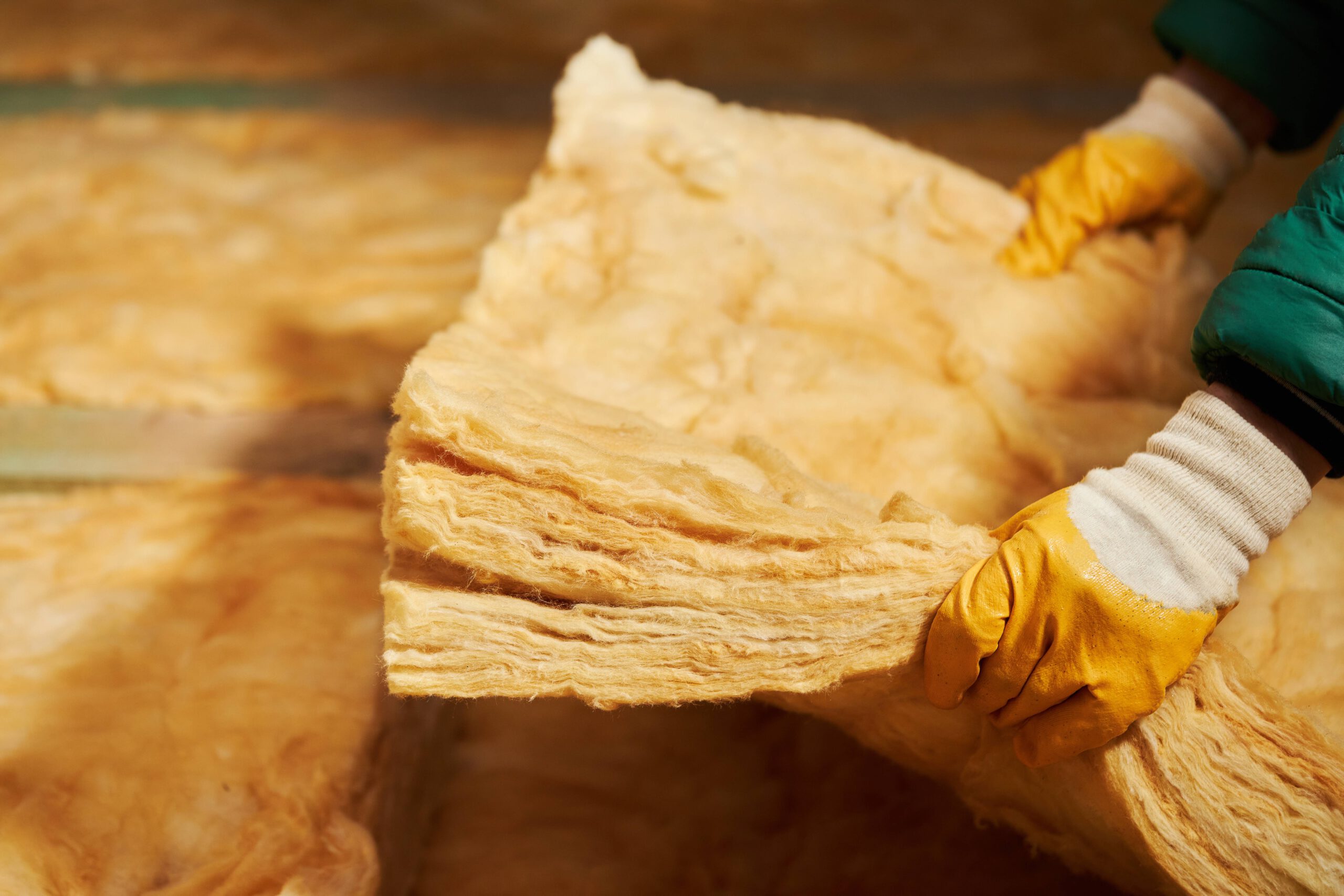What is the Preferred Method of Removing Insulation?
by siteadmin

You should always hire a professional to remove attic insulation. They will use a special vacuum to suck the old insulation and discard it in a dumpster.
It’s rare to need to rip out old attic insulation and replace it with new materials unless there’s severe animal damage or mold issues. But when it does, it’s a messy job.
The Preferred Method
If you have a home with old insulation, it’s time to think about getting rid of it. The insulation may be soiled with rodent droppings, mold and mildew. It can also hamper air flow in the attic and lower the overall air quality in your home. Additionally, it creates moisture problems that can cause stains on drywall ceilings.
If your home has blown-in cellulose or fiberglass batt insulation, the best method is to remove it in sections. Start at the furthest corner of the attic and work your way back toward the attic access point. As you move forward, rake or sweep the old insulation off the floor and drop it in a waste bag. Continue this process until the entire attic is clear of all insulation. This job can take 5 to 8 hours or more if you have a large attic. It’s important to take breaks and get fresh air every 15 minutes.
Before you begin, set up all your equipment. The most important thing is a commercial vacuum that is rated for attic use. It should have metal hose connectors and large vacuum bags. A ladder is also essential, as well as a HEPA filtered shop-vac, a brush and a dustpan for collecting any remaining debris. You’ll also need a pair of rubber-coated gloves, either a respirator or surgical mask, and reliable goggles with anti-fog coating. Some professionals prefer full body jumpsuits to protect themselves from the toxic fumes produced by the insulating spray.
In addition to being a fire hazard, certain types of old insulation can contain dangerous materials such as vermiculite. These are not easy to get rid of and require a professional.
If you want to save money on energy costs, replace the existing attic insulation with a new layer. However, you should not put a new layer of attic insulation over old, dirty insulation. Dirty insulation hinders air flow, promotes moisture problems and encourages the growth of molds and mildews. It can also promote rot and wood damage and reduce the lifespan of your roof shingles.
DIY
If you are handy and have the right equipment, you may be able to remove attic insulation yourself. The key is to research the type of insulation and how it’s installed, then make a plan to take care of it. You will need a ladder, HEPA filtered shop vac and large industrial bags to hold the old insulation. Depending on the size of your attic and the type of insulation you have, this could cost several hundred dollars for equipment rental and bags alone.
Blown-in fiberglass or cellulose insulation is the most common kind of attic insulation. It is a loose material that crumbles when you touch it, so it is easier to remove than rolled fiberglass or foam-in-place insulation. You will need a mask and gloves to protect yourself from cellulose dust. You will also need to do some research about the best way to dispose of it. It is likely that you will need to call your local waste management company and see if they accept this type of insulation. It is usually possible to drop it off and pay a fee, but this will be more expensive than simply throwing it in the trash.
Foam-in-place and rolled fiberglass are harder to remove, so you will need the same protective gear as with blown-in insulation. This includes a mask and gloves, but you will also need to wear protective clothing to prevent contact with any mold or rodent droppings. If there is an infestation of either, you will need to hire a pest control company before attempting to remove the insulation.
Before you start removing the attic insulation, it’s important to cover any rooms that are exposed to it. This can help protect furniture, electronics and other sensitive items from falling debris and prevent the spread of fiberglass fibers throughout your home. You will also need to seal all windows, doors, wires, pipes, exhaust fans and ducts with fire-inhibiting insulation to keep the attic air from leaking into your living space.
You should start at one end of the attic and work your way through it, sealing as you go. It’s a good idea to have a friend to help you, as well, for safety and to ensure that you don’t miss any areas. It’s a dark place and you should wear proper safety equipment, including breathing protection and eye protection.
Hire a Professional
Professionals can complete this task much quicker and more efficiently than homeowners who attempt to do it on their own. They can also get the job done at a much lower cost than the homeowner would have to spend on renting or purchasing the required equipment.
The first thing a homeowner should do before attempting to remove their attic insulation is prepare the area for the process. This includes covering the floors and walls to prevent the spread of dust and debris throughout the house. The homeowner should also cover up any electrical wiring or vents that are located in the attic space to avoid damage to these items during the removal process. Once this is done, the next step is to locate the required equipment. This should include a 23 horsepower commercial grade insulation removal machine, vacuum hoses, metal hose connectors, industrial vacuum bags to load the discarded material, and gas containers. The homeowner will also need a ladder that can reach the attic and the proper safety equipment such as eye protection, rubber gloves, and a respirator.
Once the attic insulation is removed, it should be loaded into a dumpster. The homeowner should check with their local waste management authority to see if they have any specific guidelines regarding disposal of attic insulation materials. In some instances, the insulation may contain hazardous materials such as asbestos and fiberglass that should only be handled by a licensed professional.
In some cases, the old attic insulation will need to be completely replaced. This can be due to a number of factors including rodent infestation, severe water damage, and more. In these cases, it is important to hire a professional to remove the existing insulation and install new insulation to improve the overall home energy efficiency and comfort.
In addition to reducing the homeowner’s energy bill, the attic insulation will help provide a comfortable environment by regulating the temperature in the house. Adding new attic insulation can be an easy DIY project for most homeowners, but it’s always best to consult a professional before starting the work.
Safety
The main reason to remove old insulation before installing new spray foam is that it hinders airflow in your attic and the rest of your house. It also promotes the growth of mold and mildew, which can damage your drywall ceilings. Additionally, it creates a temperature difference between your living space and attic, encouraging condensation.
Depending on the type of attic insulation, it may be difficult to remove. Blown-in cellulose is usually brown and gray material that crumbles when handled, while fiberglass batt insulation is rolled into mats that are two feet wide by four feet long. Both are generally unable to be recycled.
It is important to have the proper equipment when removing attic insulation, such as a ladder and a hex or socket wrench. It is also necessary to wear the appropriate personal protective equipment, such as a dust mask and durable rubber gloves. Additionally, you should use a HEPA-filtered shop-vac or commercial vacuum to remove the old insulation and avoid inhaling the fiberglass particles.
Before you begin, clear a path from the attic access door to the outside of your home. Protect the walls and floor along that path with a tarp or drop cloth. Next, place the attic access ladder against the attic opening and install it with safety equipment.
As you work, it is essential to take breaks. Working in an attic can be stressful and claustrophobic, so make sure to step out of the attic for fresh air every 15 minutes. This will help you avoid heat exhaustion and a potential build-up of Stachybotrys, which is a toxic mold that can cause serious respiratory problems in humans.
The attic is a prime location for mice, rats, raccoons, squirrels, and other pests to hide or breed. They can chew through the attic vents and break ductwork and wiring. They will also leave behind droppings and urine, which can stain drywall. Removing old insulation can help you control the rodent population and prevent them from entering your living spaces.
If you have older blown-in cellulose or fiberglass insulation in your attic, it is crucial to get rid of it before adding spray foam. The existing insulation can become wet or contaminated with mildew and mold, decreasing its R-value and reducing your home’s energy efficiency. It is also more susceptible to moisture, which encourages condensation and rot.
You should always hire a professional to remove attic insulation. They will use a special vacuum to suck the old insulation and discard it in a dumpster. It’s rare to need to rip out old attic insulation and replace it with new materials unless there’s severe animal damage or mold issues. But when it does,…
Recent Posts
- Lawn Care Spring Branch Advocates for Property Care: Combatting Weed Growth and Preserving Curb Appeal
- Lawn Care Spring Branch Advocates for Property Care: Combatting Weed Growth and Preserving Curb Appeal
- Lawn Care Spring Branch Advocates for Property Care: Combatting Weed Growth and Preserving Curb Appeal
- The Importance of Professional AC Installation in Statesboro, GA
- Revolutionizing Perspectives: The Impact of Drone Aerial Videography in Construction, Real Estate, and Event Marketing
